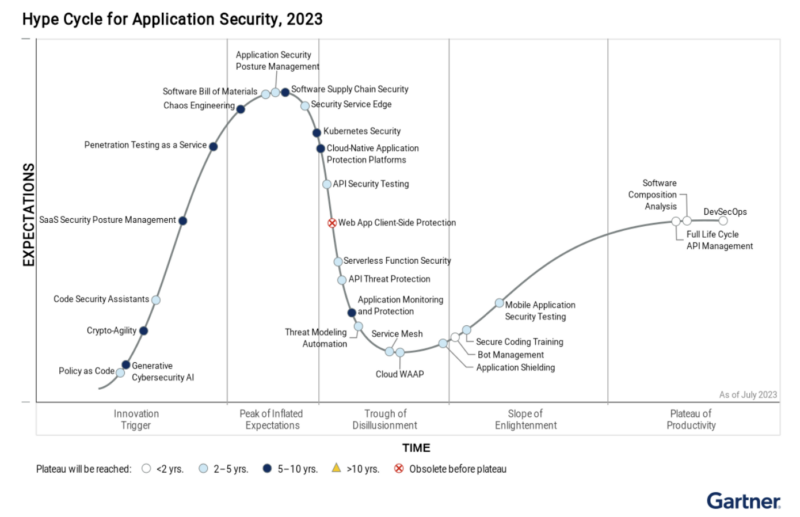What is Application Security Posture Management?
Application Security Posture Management (ASPM) is a dynamic approach that dives deep into security signals across software development, deployment, and operation. It operates as a robust radar, navigating the intricate ecosystem of applications, detecting vulnerabilities, and implementing necessary controls. By providing a comprehensive analysis, ASPM aids security leaders in amplifying their application security efficacy, making it an essential tool for risk management in the context of the rapidly evolving digital landscape.

Recognized by Gartner as a new category of tooling, ASPM has made impressive strides within a short period. From a mere 5% adoption, it’s projected to be adopted by 40% of organizations by 2026. This exponential growth highlights the increasing reliance on ASPM solutions to enhance visibility, manage vulnerabilities effectively, and enforce controls. ASPM ultimately empowers security leaders to improve application security efficacy and manage risk better.
As organizations continue to heavily rely on cloud-native applications and various security scanning tools, they are faced with the daunting task of identifying, prioritizing, and managing application risks amidst soaring complexity. Traditional application security efforts often fall short when dealing with the influx of potential risks faced by different stakeholders, including developers, platform engineers, and cloud operations. This is where ASPM’s comprehensive approach plays a pivotal role.
ASPM comes with several key benefits:
Comprehensive Context from Code to Cloud: ASPM provides a unified inventory of all software artifacts, including asset ownership and security issues, from the stage of code development to cloud deployment. This offers security teams a detailed and accurate view of the asset landscape and associated risks.
Scalable Vulnerability Remediation: Security teams often struggle to distinguish meaningful risks from the multitude of potential risks. ASPM uses context from its Intelligence Graph to filter out insignificant noise and automate the remediation lifecycle of real business risks, allowing for a proactive and scalable vulnerability remediation strategy.
Data-Driven Security Program: ASPM promotes a data-driven approach to security management. It offers flexible dashboards and detailed reports, enabling security teams to make informed, data-based decisions, moving away from traditional intuition-based programs.
Application Security Posture Management is a powerful approach that enables organizations to navigate the increasingly complex landscape of application security. By enhancing visibility, managing vulnerabilities effectively, and driving a data-driven security program, ASPM empowers security teams to be proactive, strategic, and effective. The future of application security is here, and it is intelligently driven by ASPM.
Recent articles
On a recent episode of the Future of Application Security podcast, Chad Girouard, AVP Application Security at LPL Financial, talked about some of the challenges to overcome...
Read moreOn a recent episode of the Future of Application Security podcast, Dave Ferguson, Director of Technical Product Management, Software Supply Chain Security at ReversingLabs, explained why the...
Read moreReady to Scale Your Application Security Program?
Sign up for a personalized one-on-one walkthrough.

